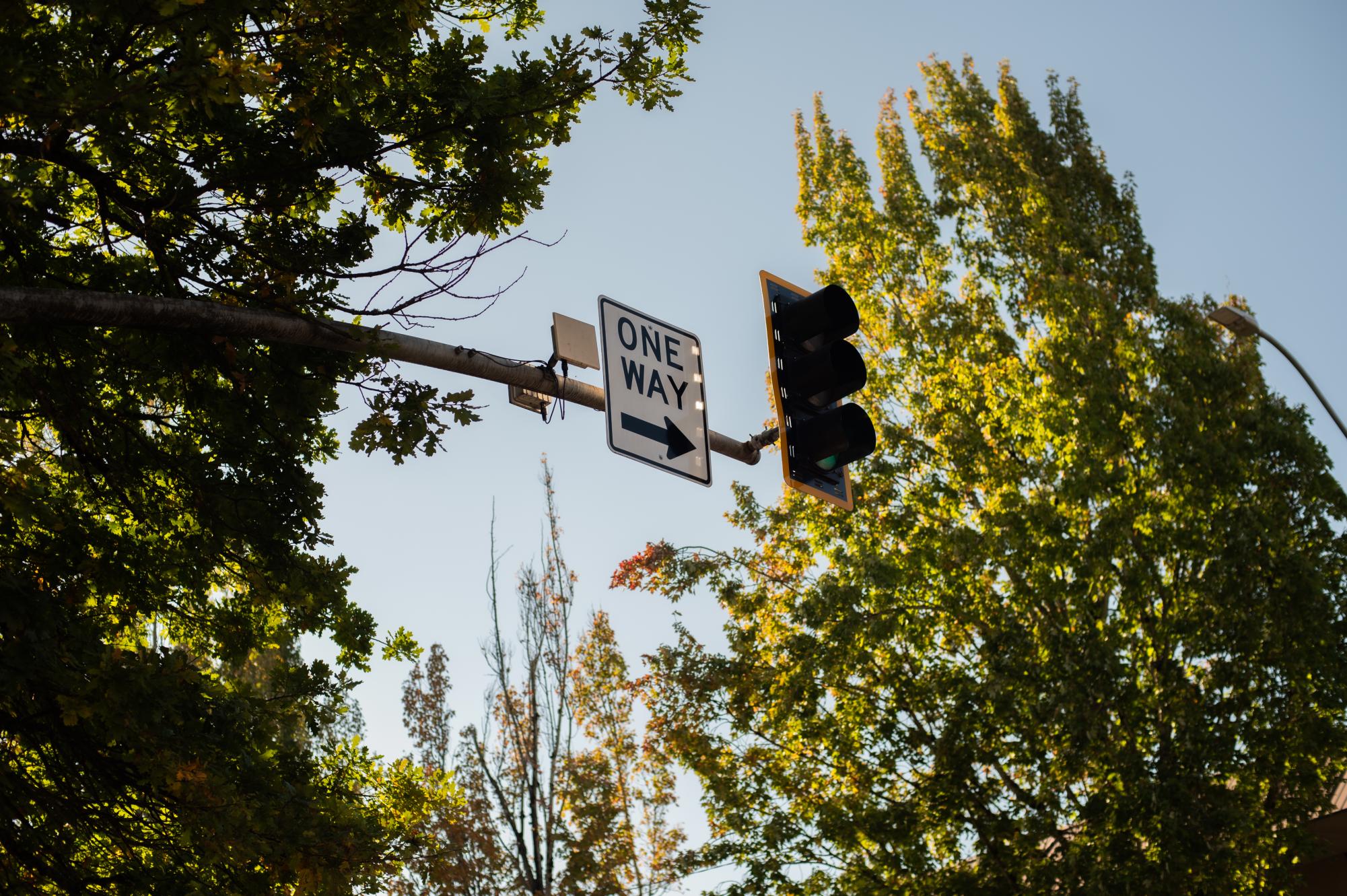Have you ever been stuck in busy traffic with a burning desire to go…the other way?
By this point, you have tried to turn around, but you have to go a city block over in either direction before turning back and that’s all too much work.
It can be easy to wonder why there are so many one-way streets in both downtown Corvallis and around Oregon State University’s campus.
Corvallis is home to the state’s largest university and a population of nearly 60,000. Despite that number growing, much of Corvallis’ infrastructure dates back to the 1800s, according to the City of Corvallis website.
Corvallis resident Eric Carlson, said with Corvallis’ history, the current layout is the best layout that could have been implemented.
“It’s the best solution given the situation,” Carlson said. “Downtown was built when Corvallis was much smaller and horses were still common transport.”
Greg Gescher, assistant public works director for the City of Corvallis, said that the street system has been established for a long time and predates the experience of all current city employees.
Gescher said campus streets are not operated or maintained by the city, but offered speculation as to why there are so many one-way streets in Corvallis.
“I can’t speak to the historic discussion/decision, but some of the reasons might be that one-way streets can reduce the number of left turn conflicts at intersections, and so may result in fewer accidents and make pedestrian crossings safer since the pedestrian only has to pay attention to vehicles coming from one direction,” Gescher said in an email.
Gesher said that SW Third Street and SW Fourth Street are state highways and carry high volumes of traffic in the community, particularly through the downtown area, with three lanes on each street.
“As you would imagine, if the highway were to only occupy Third or Fourth Street, you would only be able to fit two travel lanes in each direction within the existing right-of-way, and only if you eliminated parking on both sides of the street,” Gescher said.
Gescher added that by creating two one way streets, the city could accommodate a higher volume of traffic.
“Change is always possible, but it seems to work pretty well now, and so I wouldn’t expect much change to the current configuration in the foreseeable future, including the addition of more lanes,” Gescher said.


















































































![Newspaper clipping from February 25, 1970 in the Daily Barometer showing an article written by Bob Allen, past Barometer Editor. This article was written to spotlight both the student body’s lack of participation with student government at the time in conjunction with their class representatives response. [It’s important to note ASOSU was not structured identically to today’s standards, likely having a president on behalf of each class work together as one entity as opposed to one president representing all classes.]](https://dailybaro.orangemedianetwork.com/wp-content/uploads/2025/03/Screenshot-2025-03-12-1.00.42-PM-e1741811160853.png)
























